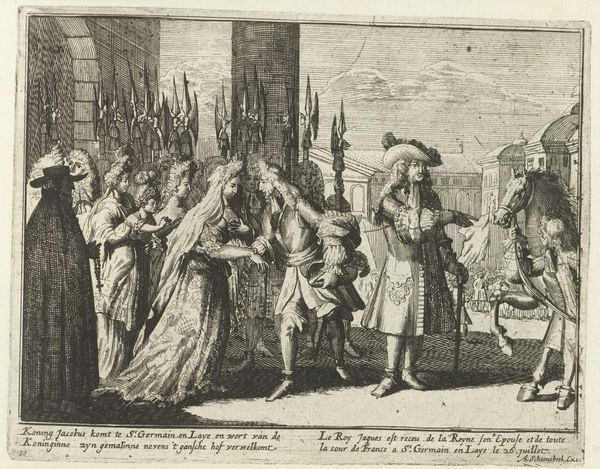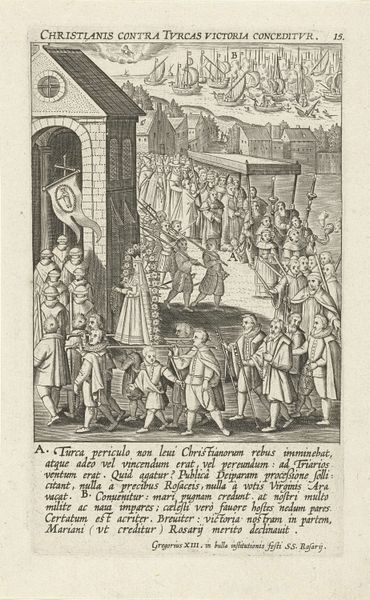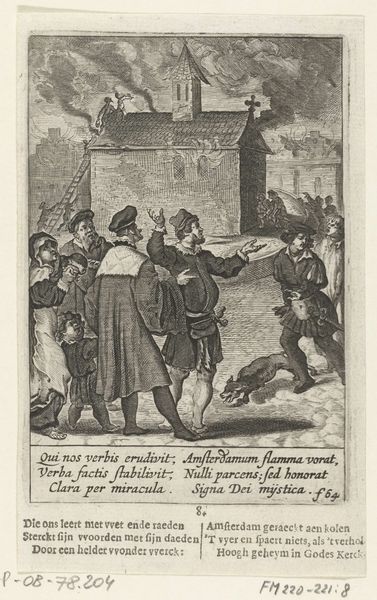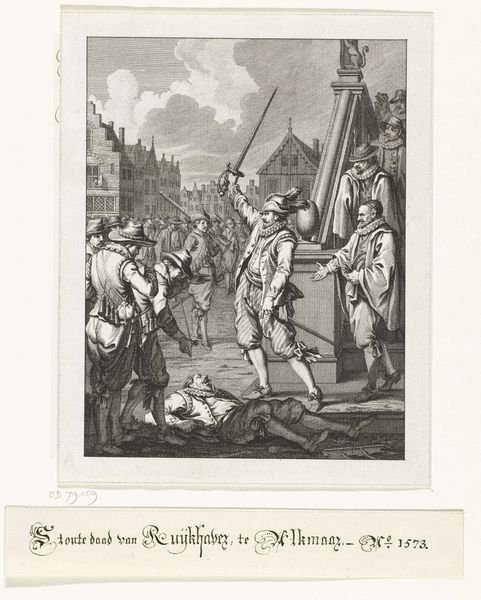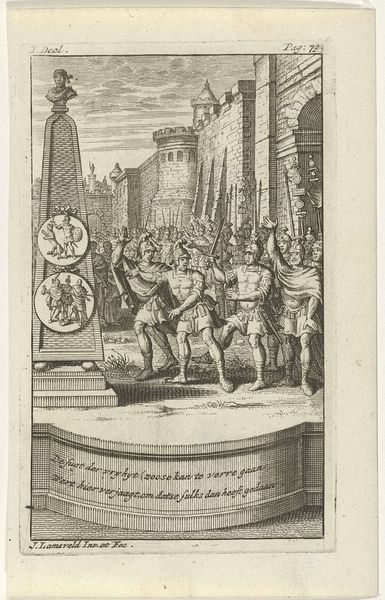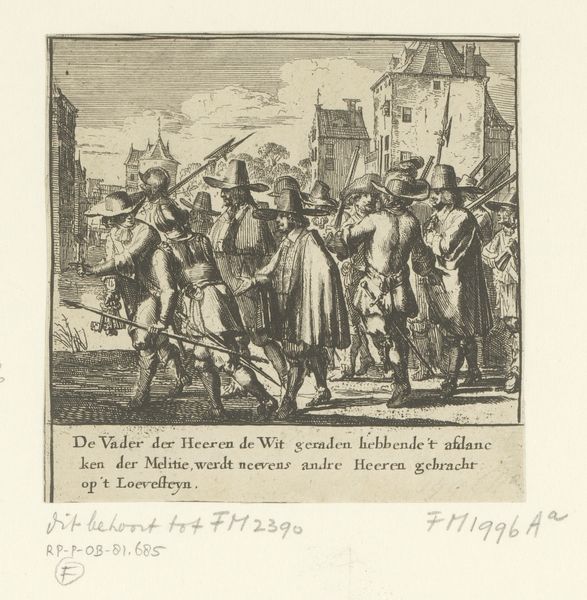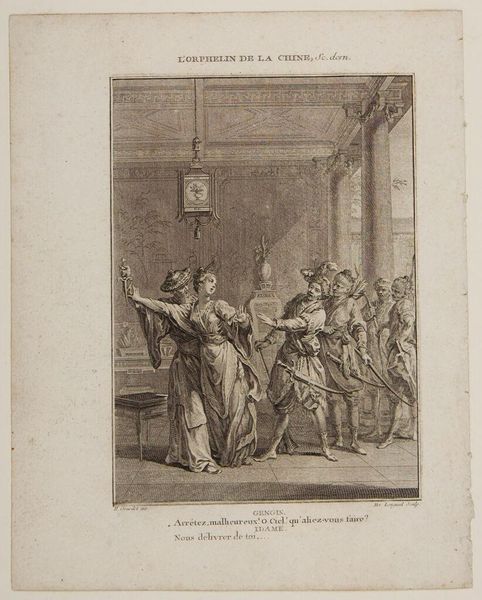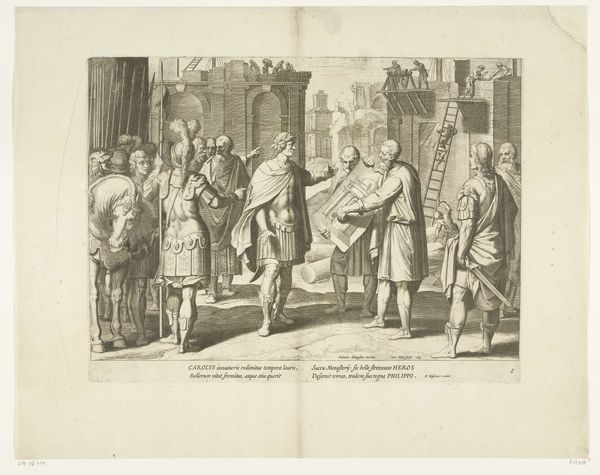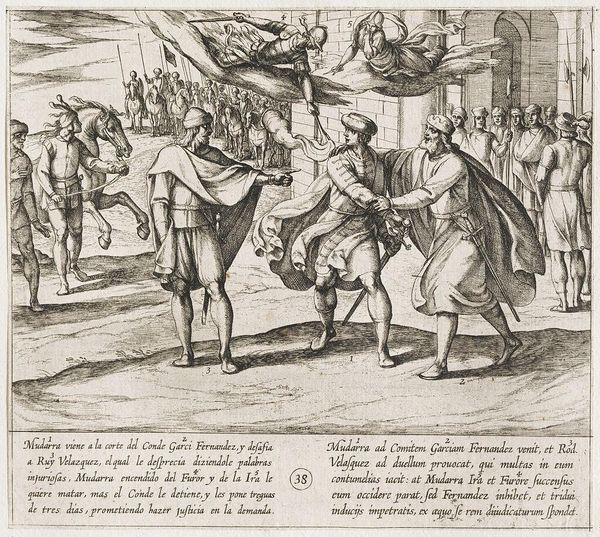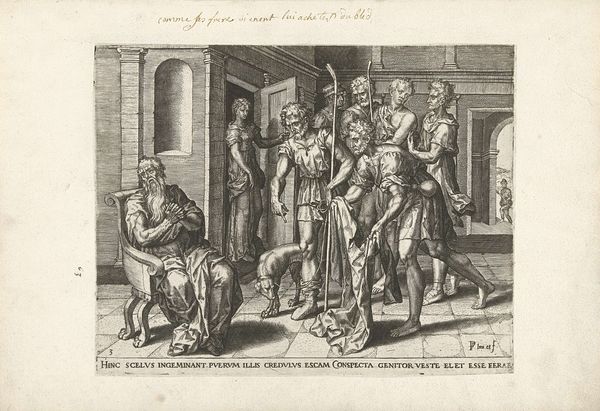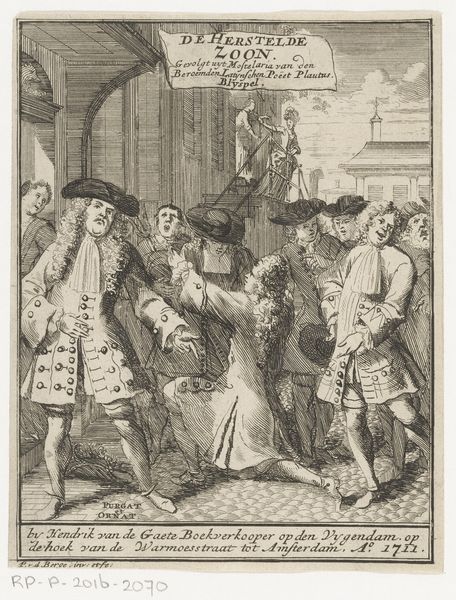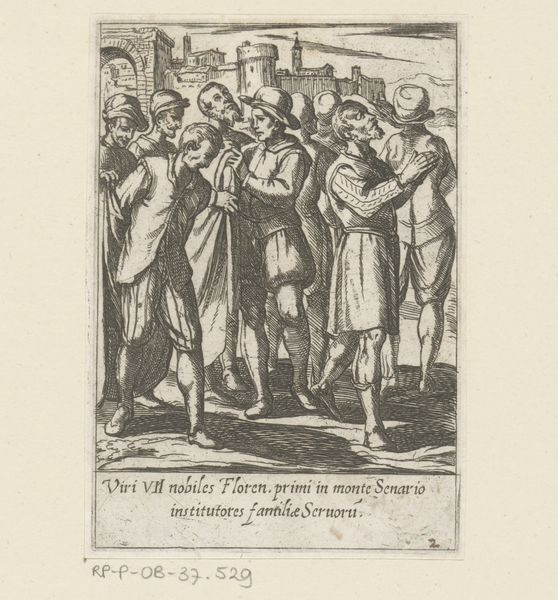
Johan de Wit onderhandelt met de Engelsen over de vrede van Westminster en de Acte van Seclusie, 1654 1675
0:00
0:00
print, engraving
#
narrative-art
#
baroque
#
dutch-golden-age
# print
#
old engraving style
#
history-painting
#
engraving
Dimensions: height 106 mm, width 105 mm
Copyright: Rijks Museum: Open Domain
Editor: Here we have Romeyn de Hooghe’s engraving from 1675, titled "Johan de Wit Negotiates with the English about the Peace of Westminster and the Act of Seclusion, 1654." It’s fascinating how much detail is captured in this small print. The overall atmosphere feels quite formal and tense. What do you see in this piece, particularly concerning the symbolism? Curator: The symbols are paramount here. Look at the figures' postures; they communicate a narrative of power and diplomacy. De Wit’s forward stance, the open gestures – these suggest persuasion and a willingness to engage. Notice also how the English delegation contrasts with the Dutch. Editor: Yes, their body language seems more reserved, perhaps even skeptical. Does this choice have any relevance? Curator: Absolutely. It subtly emphasizes the power dynamics at play. The peace of Westminster was crucial for the Dutch Republic. Also, note the columns in the background; in art, columns often signify strength and stability, qualities the Dutch likely wanted to project during these negotiations. Is there anything that stands out to you regarding the table in the background? Editor: It appears people are engaged in formal debate. The scale feels off compared to the other figures and building. Is there something unusual about the inclusion of that chamber? Curator: Good eye! This inclusion connects the act of negotiating to governing. A reminder that such meetings lead to the policies impacting all aspects of life within the republic. These negotiations weren't just about peace, but about the future. What are your final thoughts? Editor: It’s a powerful illustration of a pivotal historical moment. The artist captured not just the event but also the underlying tensions. Curator: Precisely. The artwork serves as a potent reminder of the era's cultural and political anxieties. It also reinforces the timeless role of visual imagery in shaping historical memory.
Comments
No comments
Be the first to comment and join the conversation on the ultimate creative platform.
